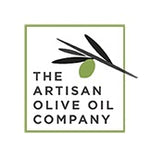Balsamic Glaze vs Aged Traditional Balsamic Vinegar: What’s the Difference?
When shopping for gourmet ingredients, it’s common to encounter a wide range of products labelled “balsamic” — from balsamic glazes to aged traditional balsamic vinegar. The price difference between these products can be substantial, often leaving consumers wondering: Are they the same product?
The answer lies in their production methods, ingredients, and most importantly, their quality and culinary purpose.
What Is Aged Traditional Balsamic Vinegar?
Aged traditional balsamic vinegar (Aceto Balsamico Tradizionale) is a true culinary treasure. Produced through a slow, artisanal process, it begins with cooked grape must, which undergoes natural fermentation and acetification. Over many years, the vinegar is aged in a series of wooden barrels, gradually developing its signature thickness, complex flavour, and balanced sweet-sour profile.
The result is a luxurious condiment with deep complexity — used sparingly to elevate dishes such as salads, cheeses, grilled meats, and desserts. The longer the aging process, the higher the vinegar’s density, viscosity, and intensity.
It’s this meticulous, time-intensive production that explains why authentic aged balsamic vinegars command premium prices.
What Is Balsamic Glaze?
Balsamic glaze offers a more affordable, versatile option — but it is not the same as aged balsamic vinegar. Balsamic glaze is typically made from balsamic vinegar combined with other ingredients such as sugar, starches, or thickeners. These additions create a syrupy consistency and allow for mass production at lower cost.
While balsamic glaze is convenient and suitable for everyday cooking — ideal for drizzling over salads, decorating plates, or glazing meats — it lacks the depth and nuanced flavour of a true aged traditional balsamic vinegar.
Choosing the Right Balsamic for Your Kitchen
For gourmet cooking and fine dining, aged traditional balsamic vinegar is unmatched. Its rich, complex taste can transform even the simplest dish into something extraordinary. Use it sparingly as a finishing touch.
For everyday use or where decorative presentation is desired, glaze is an accessible and versatile choice.
At the Artisan Olive Oil Company, we proudly source some of the finest aged balsamic vinegars of Modena, crafted by award-winning producers such as Due Vittorie — perfect for luxury food lovers seeking authenticity and exceptional flavour.

